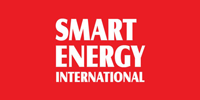
Highview Power has partnered with TSK, an engineering and construction firm to develop large-scale cryogenic energy storage facilities.
The partners say that the technology could enable an immediate shift to renewables, rapidly speeding up the transition to sustainable energies.
Cryogenic energy storage uses low-temperature liquids such as liquid oxygen or nitrogen to store surplus power by using electricity to freeze them. When its required, stored energy is released by rapid heating, and the resultant gas turns a turbine to generate power.
The partnership, under the auspices of their joint venture Highway TSK, will develop multiple projects between 2019 and 2022 in Spain, South Africa and the Middle East.
Long term energy storage is growing in popularity with grid operators as it helps balance the grid, increase reliability and improve generation economics as the technology offers weeks-long storage potential, rather than hours or days.
Joaquín García Rico, CEO of TSK, said: “The technology is not only cost effective, it is scalable, clean, has a long lifespan and can be deployed now.”
Highview Power has already built and connected two cryogenic energy storage plants to the UK grid.
read more











